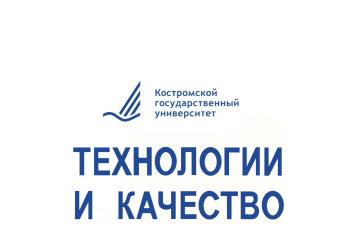- 5
- NUMERICAL MODEL OF DUST PERMEABILITY PROCESSES OF TEXTILE MATERIALS OF MINER'S SUIT
- Abramov A. V., Utkin N. N., Rodicheva M. V. Numerical model of dust permeability processes of textile materials of miner’s suit. Technologies & Quality. 2025. No 1(67). P. 34–40. (In Russ.). https://doi.org/10.34216/2587-6147-2025-1-67-34-40.
- DOI: https://doi.org/10.34216/2587-6147-2025-1-67-34-40
- УДК: 687.017.622:687.17
- EDN: SCNLER
- Publish date: 2025-02-17
- Annotation: It is shown that improving the safety of miner’s suits is associated with the development of theoretical concepts of physical processes in textile materials. The current understanding of the passage of dusty air through a textile material does not always ensure the safety of miner’s suits. It has been established that one of the ways to solve this problem is to build and use digital twins of the dust permeability processes of textile materials. The mechanisms of dusty air passage through a textile material are analysed, a model of dust movement in the air flow in the immediate vicinity and structure of the textile material is proposed. A mathematical model of dust particle capture by structural elements of the fabric is compiled. Based on these ideas, a numerical model of the dust permeability of a textile material is compiled, its solution is obtained using the example of fabric, an example of using the modelling results in calculating the dust permeability and dust capacity of textile materials is shown. Key words: miner’s suit, dust permeability, dust capacity, dust particles, numerical model, dust fraction, mechanisms of dust capture by material.
- Keywords: air permeability, fabric, fabric clearance field, geometric fabric model, air flow rate, numerical model, Navier–Stokes equation
- Literature list: 1. Kulichenko A. V. Air permeability of textile fabrics. St. Petersburg St. Univ. of Industrial Technologies and Design Publ., 2023. 366 p. (In. Russ.). 2. Ogulata R. T. Air Permeability of Woven Fabrics. Journal of Textile and Apparel, Technology and Man-agement. 2006;5(2):10. 3. Theoretical Analysis, Calculation, and Prediction of the Air Permeability of Textiles. Fibre Chemistry. 2005;37(5):371–380. 4. Kyosov M., Angelova R., Stankov P. Numerical modeling of the airpermeability of two-layer wovenstruc-ture ensembles. Textile Research Journal. 2015;86(19):1–13. 5. Ghane M., Abdellahi S., Soultanzadeh M. Numerical modeling of the air permeability of knitted fabric using computational fluid dynamics (CFD) method. Fibers and Polymers. 2017;18(9):1804–1809. 6. Sorokin D. V., Nikiforov A. L. Mathematical modeling of non-stationary heat transfer in a multilayer composite material. Teknologii i kachestvo [Technologies & Quality]. 2021;1(51):9–14. (In Russ.) 7. Bejan A. et al. Heat Transfer Handbook. New York, Wiley, 2003. 611 p. 8. Abramov A. V., Smirnov S. A., Rodicheva M. V., Utkin N. N. Method of thermal calculation of clothing in conditions of low temperatures and wind. Collection of works of the all-Russian scientific and practical conference named after Ya. V. Milman. Moscow, 2024. P. 24–28. (In Russ.) 9. GOST 12088–77. Materialy tekstilnye i izdelia iz nih. Metod opredelenia vozduhopronitsaemosti [State standart 12088–77. Textile materials and products made from them. Method for determining air perme-ability]. Мoscow, Izdatelstvo Standartov Publ., 2021. 7 p. (In Russ.). 10. Stasheva M. A., Novosad T. N., Evseeva N. V., Gusev B. N. Testing of knitted fabrics to confirm com-pliance. Teknologii i kachestvo [Technologies & Quality]. 2020;1(47):22–25. (In Russ.)



